Eliminating Waste in Construction – An Interview with Turner Burton
June 29, 2020 —
Aarni Heiskanen - AEC BusinessI had the pleasure of interviewing Turner Burton, President of Hoar Construction. We discussed waste in construction and how his company is on a mission to eliminate it.
Can you say a few words about yourself and your company?
I grew up around construction and this company, hearing about the business from both my grandfather and my father. I started working on job sites in high school forming concrete, continued working on projects throughout college, and since graduating from college, I’ve taken on different roles in the company to ensure I understand all aspects of the business.
Hoar Construction was founded 80 years ago, and throughout our history, we’ve been committed to learning from every project to improve our processes and deliver the best building experience possible for our clients and partners. But it’s the relentless pursuit of improvement that really sets us apart as builders – to always strive to be the best and do the right thing for our customers and partners. There’s something to be said for setting a goal that you’ll always be working toward. It fosters hard work, collaboration, and productive effort. If we’re always working to find a better way, then we will always be improving. That effort drives better results for our owners and everyone we work with. Essentially, we’re always working toward something. Always improving. Always in process.
Read the court decisionRead the full story...Reprinted courtesy of
Aarni Heiskanen, AEC BusinessMr. Heiskanen may be contacted at
aec-business@aepartners.fi
20 Years of BHA at West Coast Casualty's CD Seminar: Chronicling BHA's Innovative Exhibits
May 03, 2018 —
Beverley BevenFlorez-CDJ STAFFThe Bert L. Howe & Associates, Inc., (BHA) exhibit has been a fixture at West Coast Casualty's Construction Defect Seminar since the mid-1990's. Through the years, BHA has updated their display, but no matter what year, you could count on the BHA exhibit to provide a not-to-be-missed experience.
2008-BHA's sleek, rear projection display includes a screen that promotes the firm's capabilities that can be seen throughout the exhibit hall. This would be one of many innovations BHA has brought to the West Coast Casualty seminar.
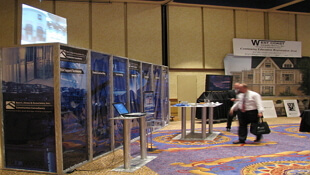
2009-With the success of the rear screen projection, BHA adds additional monitors to provide attendees with more information about BHA.
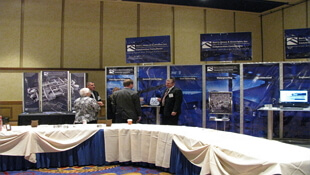
2010-BHA adds an interpretive professional development exhibit targeted to Building Envelope issues allowing adjusters and other non-construction professionals hands on access to the systems and components at the heart of many related such claims.


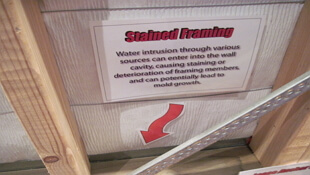
2011-BHA's Swing for Charity challenge is born.

2012-Always innovating, BHA expands its rear projection and professional development offerings to West Coast attendees.

2013-BHA showcases additional capabilities with a twenty-four foot, custom, convex, immersive video experience.

2014-BHA adds an iPhone display to give a hands-on demonstration of their data collection methods.
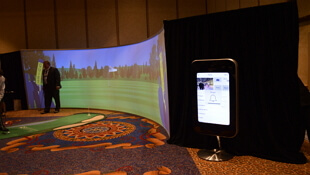
2015-BHA's twenty-four foot , custom, convex, immersive video experience was elevated with two additional rear projection screens, reflecting BHA's newest capabilities and services.

2016-BHA dazzles attendees with their new exhibit comprised of more than 15 integrated, high definition, LCD displays. iPads are stationed on tables to conveniently demonstrate BHA's data collection processes.
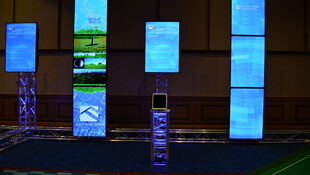
2017-BHA's Swing for Charity Golf Challenge raised $2,225.00 for the National Coalition for Homeless Veterans and $1,900 for Final Salute.
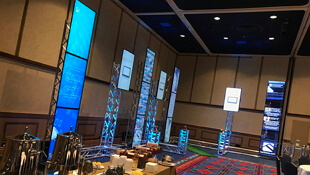
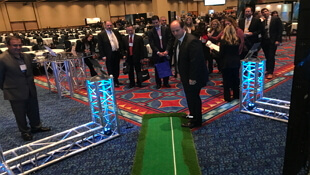
Read the court decisionRead the full story...Reprinted courtesy of
Settlement Agreement? It Ain’t Over ‘Til it’s . . . Final, in Writing, Fully Executed, and Admissible
April 12, 2021 —
Todd Likman - Colorado Construction LitigationAs litigators we have all been there: nearing the end of a hard-fought mediation that lasted all day. Your significant other texts to ask what is for dinner; daycare closes in thirty minutes; the dog needs to be let out. The mediator, a retired judge, gently reminds you of his prior commitment—a speaking engagement at a volunteer charity dinner event that night. Though the parties started the day at opposite ends of the spectrum, after numerous counteroffers, persistent negotiation, and mediation tactics, they finally strike a deal.
As the mediator prepares a document memorializing the terms of settlement, the parties wait with bloodshot eyes, and a sense of guarded accomplishment considering compromises were
made, but alas, an outcome seems certain. You text your significant other to indicate that you will pick something up for dinner on your way home.
Then, the mediator informs you that computer problems are preventing finalization and transmission of the document for signature. The mediator offers to send an e-mail setting forth the material settlement terms and asks each party to respond via e-mail to confirm the terms are correct, which the parties do. After a quick e-mail to your experts and case team asking them to cease trial preparation work, you leave for home.
Read the court decisionRead the full story...Reprinted courtesy of
Todd Likman, Higgins, Hopkins, McLain & RoswellMr. Likman may be contacted at
likman@hhmrlaw.com
Colorado Supreme Court Grants the Petition for Writ of Certiorari in Vallagio v. Metropolitan Homes
June 22, 2016 —
David M. McLain – Colorado Construction LitigationWe have previously reported on the Vallagio v. Metropolitan Homes case, in which the Colorado Court of Appeals upheld a provision in an association's declaration of covenants, conditions, and restrictions, which required declarant consent before an arbitration provision could be amended out of the document. To read the past articles on the case, please review
Vallagio v. Metropolitan Homes: The Colorado Court of Appeals' Decision Protecting a Declarant’s Right to Arbitration in Construction Defect Cases and
The Vallagio HOA Appeals the Decision from the Colorado Court of Appeals.
Today, the Colorado Supreme Court granted the association's petition for writ of certiorari, en banc, on the following reframed issues:
Whether the court of appeals erred by holding as a matter of first impression that Colorado’s Common Interest Ownership Act (“CCIOA”) permits a developer-declarant to reserve the power to veto unit owner votes to amend common interest community declarations.
Read the court decisionRead the full story...Reprinted courtesy of
David M. McClain, Higgins, Hopkins, McLain & Roswell, LLCMr. McClain may be contacted at
mclain@hhmrlaw.com
Microwave Transmission of Space-Based Solar Power: The Focus of New Attention
July 24, 2023 —
Robert A. James & William E. Fork - Gravel2Gavel Construction & Real Estate Law BlogScientists have long proposed that solar electricity generation in space could be an integral component of the world’s carbon-free future. In the 1970s, a U.S. Navy experiment showed that it might be possible to capture solar power and wirelessly transmit it from outer space using microwave beams. Progress stalled after that early test—the models used were at such a massive scale that creating a real-world system felt like science fiction. Recently, amid growing concerns about power grid security and intensifying legislation around carbon emissions, renewed attention focused on a smaller, more lithe microwave transmission system. This time around, the military is not the only interested party. Scientists around the world are conducting similar research. As investors and governments stand at the edge of a fresh green power opportunity, we look at microwave power transmission and some of the projects in this emerging field.
The basic premise of space-based solar power technology is simple enough: photovoltaic panels on a satellite in space convert the sun’s energy to electromagnetic waves at microwave frequencies. The satellite then beams the microwave energy to a receiver on Earth that transforms it into direct current. Until recently, this technique had been performed on the ground over short distances, but nobody had attempted to launch a solar panel into space. The status quo has shifted over the past few years as researchers have begun to send prototypes into orbit. In early 2023, CalTech was the first to report a breakthrough. Its model successfully beamed power from space back to their receiver atop a building in California.
Reprinted courtesy of
Robert A. James, Pillsbury and
William E. Fork, Pillsbury
Mr. James may be contacted at rob.james@pillsburylaw.com
Mr. Fork may be contacted at william.fork@pillsburylaw.com
Read the court decisionRead the full story...Reprinted courtesy of
Fifth Circuit Requires Causal Distinction for Ensuing Loss Exception to Faulty Work Exclusion
August 29, 2022 —
Avery J. Cantor & William S. Bennett - Saxe Doernberger & VitaIn Balfour Beatty v. Liberty Mutual Ins. Co., the 5th Circuit Court of Appeals provided valuable insight on coverage available through ensuing loss exceptions to faulty work and design exclusions in builder’s risk insurance policies. In Balfour Beatty, the Court held that, in order to establish coverage through an ensuing loss exception, the ensuing loss must be causally distinct from the original excluded loss.1
Balfour Beatty, serving as general contractor for construction of a commercial office building in Houston, Texas, subcontracted with Milestone for steelwork on the project. As part of this work, Milestone welded a 2-inch metal plate to external tubing on the eighteenth floor of the building. While welding the plate in place, welding slag fell down the side of the building, damaging exterior glass windows on the floors below.
Balfour Beatty and Milestone, along with the developer, sought coverage for the damage to the windows under their builder’s risk policy, issued by Liberty Mutual. Liberty Mutual denied coverage, claiming that the damage was excluded by the policy’s “Defects, Errors, and Omissions” exclusion. The insureds sued, arguing that the ensuing loss exception to this exclusion would carve back coverage because the damage to the windows constituted an “ensuing loss.”
Reprinted courtesy of
Avery J. Cantor, Saxe Doernberger & Vita and
William S. Bennett, Saxe Doernberger & Vita
Mr. Cantor may be contacted at ACantor@sdvlaw.com
Mr. Bennett may be contacted at WBennett@sdvlaw.com
Read the court decisionRead the full story...Reprinted courtesy of
Toolbox Talk Series Recap - The New Science of Jury Trial Advocacy
December 31, 2024 —
Douglas J. Mackin - The Dispute ResolverIn the November 21, 2024 edition of Division 1's Toolbox Talk Series,
John Jerry Glas discussed how construction lawyers should adjust their trial strategies in response to shifts in juror attitudes. Glas believes that jurors have changed in the last twenty years, with modern jurors being more reluctant than ever to be seen as a lawyer’s puppet. Instead, they simply want a lawyer to help them organize and wade through evidence without spinning it and without spoon-feeding it. Essentially, Glas believes that lawyers achieve better jury trial results if they acknowledge the paradigm shift in jury psychology and reinvent themselves in response by influencing jury deliberations without directly telling a jury what to do. Glas refers to this as the “Waiter Pivot” and recently published a
book on the topic.
Throughout his presentation, Glas discussed how construction lawyers can embrace the Waiter Pivot throughout a jury trial:
- Voir Dire: Lawyers make their first impressions on a jury during voir dire. As such, lawyers should avoid questions that make jurors feel judged or stereotyped. Instead, give the jurors credit and make use of the opportunity to begin framing their case. For example, Glas once repeated the word “specifications” or “specs” in every question during voir dire where his product liability case turned on whether or not the product deviated from specifications.
Read the court decisionRead the full story...Reprinted courtesy of
Douglas J. Mackin, Cozen O’ConnorMr. Mackin may be contacted at
dmackin@cozen.com
Commercial Real Estate in 2023: A Snapshot
January 17, 2023 —
Adam J. Weaver - Gravel2Gavel Construction & Real Estate Law BlogAs we close out the last remaining weeks of 2022, all eyes look ahead to 2023. Below is a quick snapshot highlighting three trends and predictions that may continue to shape the commercial real estate landscape in 2023.
- Office space and the digital economy present attractive investment opportunities and potential. Even with all of the chatter about office vacancies during the last three years, according to Moody’s Analytics, “it’s important to note that none of the regions across the U.S. have seen office vacancy rates dip below their pre-pandemic Q4 2019 levels.” This might be due to creative and reimagined office spaces as the return to office continues. The hybrid work format and flexibility in spaces will continue in 2023.
- Data analytics and Proptech will continue to play a larger role, allowing property owners and tenants to collaborate to provide more efficiency, whether to achieve sustainability goals or leverage technology like immersive experiences to entice tenants to new spaces. An increase in demand for technology to solve issues will most likely continue in commercial real estate.
Read the court decisionRead the full story...Reprinted courtesy of
Adam J. Weaver, PillsburyMr. Weaver may be contacted at
adam.weaver@pillsburylaw.com




































































